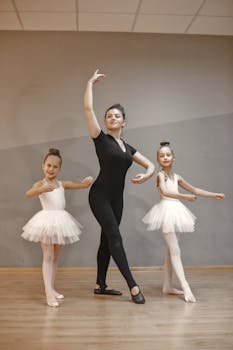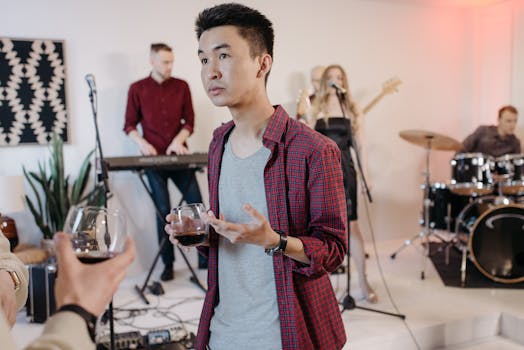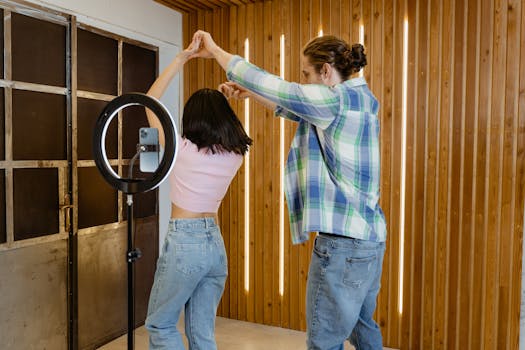As we look toward the future of dance communities in the United States, it becomes clear that these groups are more than just collectives of individuals with a shared passion. They embody a vibrant culture and represent diverse experiences, reflecting the rich tapestry of American life.
Modern technology, combined with the evolving landscape of social interaction, is transforming how dance communities engage with each other and the world. With an increasing number of people embracing dance as a form of expression, the potential for growth and collaboration is immense.
As these communities continue to adapt and thrive, new opportunities emerge for connection, creativity, and inclusivity. Understanding the key trends shaping the future of dance communities will provide helpful insights for both enthusiasts and professionals alike.
The Rise of Virtual Dance Communities
The internet has revolutionized how we connect and share experiences, especially in dance. Virtual platforms allow dancers to meet and collaborate regardless of geographical barriers, fostering inclusivity.
Online classes, workshops, and competitive events have gained tremendous popularity. Dancers are now able to learn from industry leaders across the globe through streaming services and social media.
Virtual dance communities also enable room for innovation. With platforms like TikTok and Instagram, dancers can showcase their talent and creativity to millions worldwide, expanding their audience and reach.
This shift toward virtual interactions allows for more diverse representation. Dancers from various backgrounds and styles can share their perspectives and contribute to a richer cultural dialogue.
Moreover, as people embrace the convenience of online access, hybrid models—combining in-person and virtual experiences—are likely to emerge as a preferred format in the future.
Cultural Fusion and Collaboration
The future of dance communities in the U.S. is marked by a blending of styles and cultural influences. Dancers increasingly pull inspiration from different traditions, leading to innovative choreography and performances.
Cultural fusion highlights the importance of respect and understanding among various artistic expressions. This cross-pollination enriches communities and invites new voices to the forefront.
Collaborative efforts, such as workshops and joint performances, encourage dancers to learn from one another. Sharing skills and techniques fosters creativity and strengthens community bonds.
These collaborations also attract wider audiences who may appreciate the unique blend of styles. Communities looking to promote inclusivity often embrace these trends for greater engagement and participation.
As cultural boundaries continue to blur, dance will remain a universal language, telling stories that transcend borders. This evolution inspires both seasoned dancers and newcomers alike.
Emphasis on Mental Health and Well-being
In the contemporary dance community, mental health awareness is becoming paramount. As members grapple with pressures within performance and training, the focus on mental well-being is more necessary than ever.
Many dance schools and organizations are now prioritizing workshops that center on mental health and self-care. These initiatives aim to support dancers in maintaining their overall well-being.
Connecting with peers through shared experiences offers validation and understanding. An open discussion surrounding mental health can help dismantle the stigma associated with seeking help.
Moreover, practices like mindfulness and meditation are finding their way into dance training. This promotes focus and emotional resilience, which are vital for both artistic growth and personal development.
As these practices gain traction, they enhance the overall dance experience, fostering well-rounded individuals who thrive not just in art but in life.
Community Engagement and Social Responsibility
Dance communities are increasingly stepping into their social responsibility roles. Engaging with local charities and causes helps amplify their impact beyond performances.
Initiatives that focus on social issues resonate well with both dancers and audiences. Sharing messages through art brings awareness to vital societal topics.
Through outreach programs and workshops, communities are able to connect with underprivileged groups. Dance serves as an empowering tool for self-expression and creativity.
Furthermore, sustainable practices are becoming more common. Communities are implementing eco-friendly approaches, recognizing that they play a role in environmental responsibility.
As they commit to social causes, dance communities not only enrich their local environments but also inspire others to participate in positive change.
Technological Integration in Dance Practices
The integration of technology into dance practices is transforming how choreography is created and performed. Innovations such as augmented reality and virtual reality provide new avenues for creativity.
Dancers can now leverage motion capture technology to analyze their movements critically. This allows for refinement and improvement in technique.
Moreover, social media platforms play a significant role in how dance is marketed and promoted. Dancers adept at using these channels can easily reach audiences and attract followers.
Technology’s impact extends to the performance space as well, with multimedia productions combining dance with visual arts. This creates immersive experiences for audiences, enhancing the overall enjoyment.
As technology continues to evolve, so too will the methods and styles of dance. This exciting integration fosters futuristic creativity and pushes the boundaries of traditional forms.
Focus on Inclusivity and Accessibility
Inclusivity is becoming increasingly important within dance communities. As societal awareness around equality expands, these communities are embracing diverse representation.
Programs that cater to dancers with disabilities or create safe spaces for LGBTQ+ individuals are on the rise. Ensuring that everyone feels welcome is a fundamental aspect of community growth.
Accessibility extends beyond physical limitations. Ensuring that resources—like classes, workshops, and performances—are affordable is crucial for greater participation.
Dance schools are also adapting their curricula to include various cultural styles and traditions, showcasing the importance of diversity in their teachings.
As dance communities become more inclusive, they create vibrant environments where all individuals can participate, learn, and express themselves fully.
Conclusion: The Evolving Landscape of Dance Communities
In conclusion, the future of dance communities in the United States is full of promising developments. From embracing technology to focusing on mental health, these changes reflect broader cultural shifts.
As communities continue to prioritize inclusivity and responsibility, they will foster environments where creativity thrives. This evolution enriches the dance landscape, benefiting dancers and audiences alike.
With ongoing collaboration and communication, dance communities can persist as vital forces in cultural expression. The joy of dance remains a unifying element, inspiring connections across various backgrounds.
As we step into this new era, embracing the trends shaping these communities will undoubtedly lead to exciting opportunities and experiences. The journey of dance is one of continuous growth and discovery.
Ultimately, the evolution within dance communities underscores the power of movement as a universal language, emphasizing solidarity and growth through shared experiences and stories.


